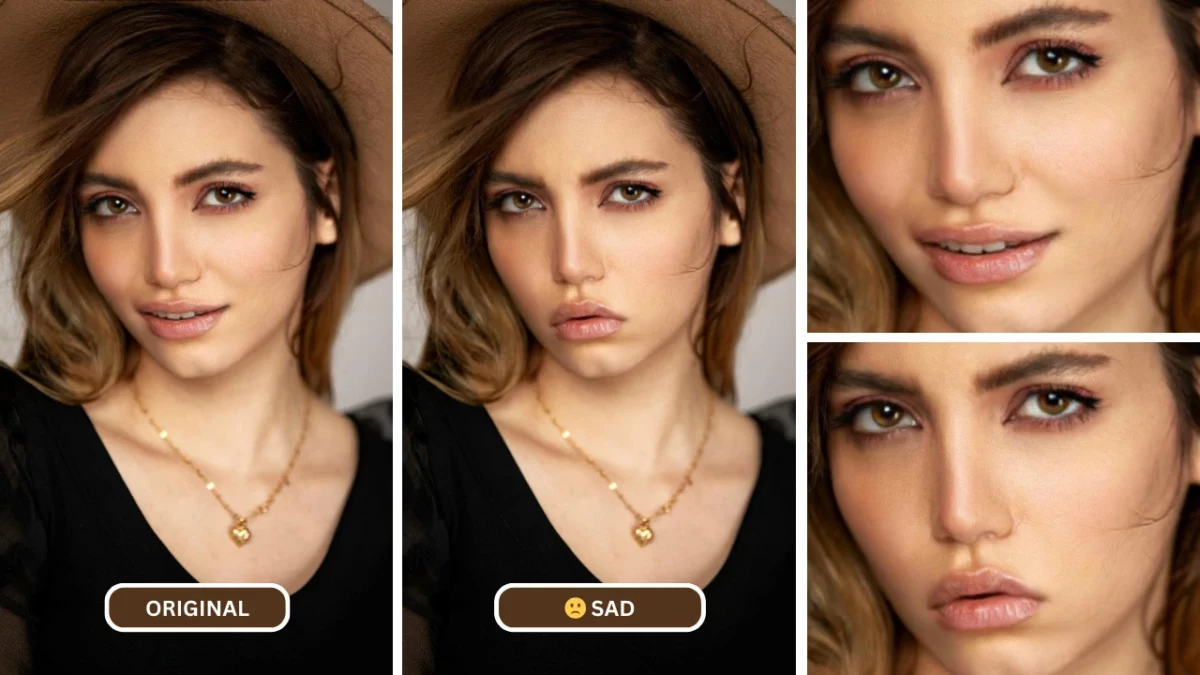1. Changing expressions using Artificial Intelligence
A sad face generator is a digital tool designed to create sad facial expressions quickly and effortlessly. Whether you’re looking to add an emotional touch to a meme, enhance a storytelling project, or simply have fun with image edits, this tool provides a convenient way to generate sad expressions without needing advanced design skills.
With the growing popularity of visual content across social media platforms, a sad face generator has become an essential resource for creators who want to evoke emotions in their audience. Whether you’re crafting a humorous meme, designing a reaction image, or developing characters for a digital story, these tools offer an easy and effective way to produce expressive sad faces.
Thanks to advancements in AI and online editing tools, anyone can now generate realistic or cartoonish sad expressions with just a few clicks. Many sad face generator tools are accessible online, allowing users to upload an image, apply sad filters, and instantly transform a neutral or happy face into one that conveys sorrow or disappointment.
In this blog, we’ll explore the various applications of a sad face generator, how it works, and the best tools available to create compelling sad facial expressions effortlessly.
2. What is a Sad Face Generator?
A Sad Face filter online is a tool that utilizes artificial intelligence to alter facial expressions in images, transforming neutral or happy faces into sad ones. These tools are designed to recognize facial features and adjust key elements such as the eyes, eyebrows, and mouth to create a convincingly sorrowful expression.
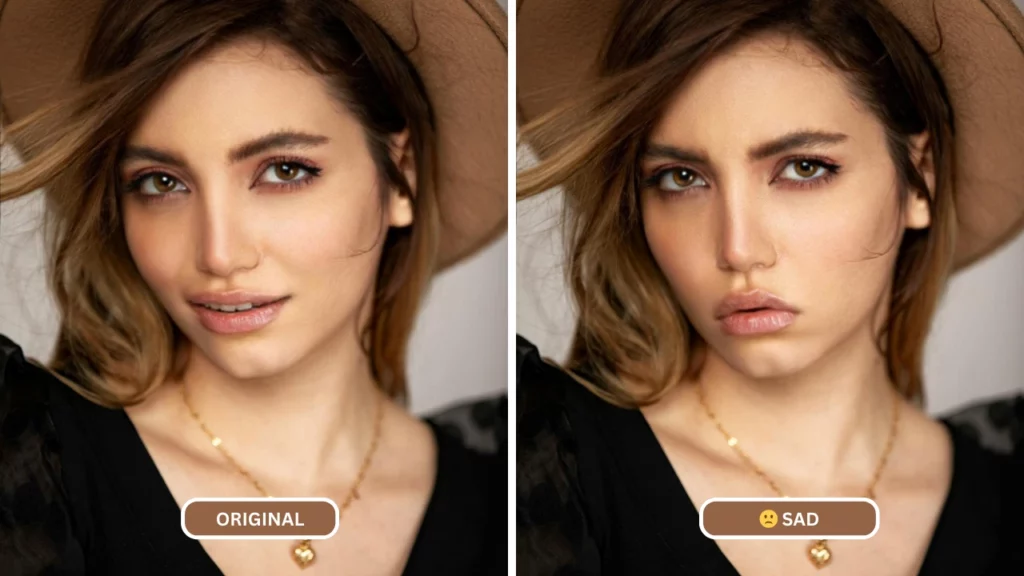
a. How Does a Sad Face Generator Work?
A sad face generator operates using advanced AI algorithms, including deep learning and neural networks, to detect and modify facial emotions. When an image is uploaded, the AI scans the face to identify crucial points, such as the shape and position of the eyes, lips, and eyebrows. The AI then makes subtle adjustments, like lowering the corners of the mouth, slightly furrowing the eyebrows, and softening the eyes to reflect sadness. Some advanced sad face generators also use generative adversarial networks (GANs) to produce highly realistic transformations while maintaining the original image quality.
b. AI-Powered Emotion Manipulation in Images
Modern Sad Face AI leverages tech to manipulate emotions in images with remarkable accuracy. Unlike traditional editing methods, where a user manually adjusts facial features using tools like Photoshop, an AI-powered sad face generator automates the process with minimal user input. AI can recognize intricate facial cues that contribute to emotional expressions, making the final result look more natural. Furthermore, these tools can apply the transformation in real time, making them useful for applications like social media filters, virtual avatars, and digital content creation.
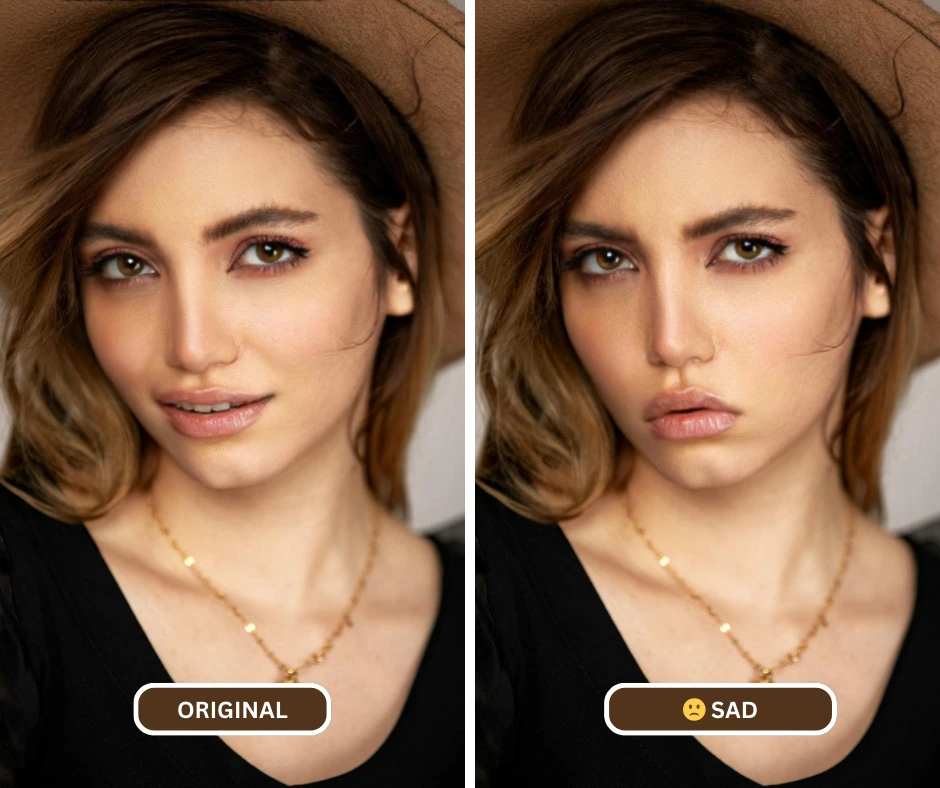
c. AI-Generated Sad Faces vs. Manual Photo Editing
There is a clear distinction between AI-generated sad faces and those created through manual photo editing. In manual editing, a user must carefully manipulate facial features using software, which requires skill, time, and experience. The final outcome depends on the editor’s ability to maintain realism while altering the expression. On the other hand, a sad face generator can achieve similar or even superior results instantly, without requiring any expertise. AI-based generators analyze and modify facial expressions automatically, ensuring that proportions and lighting remain consistent, which can be challenging to achieve manually.
By utilizing a Sad Face filter, users can effortlessly transform facial expressions while maintaining the authenticity of the image, making it a powerful tool for both personal and professional use.
3. Why Use a Sad Face Generator?
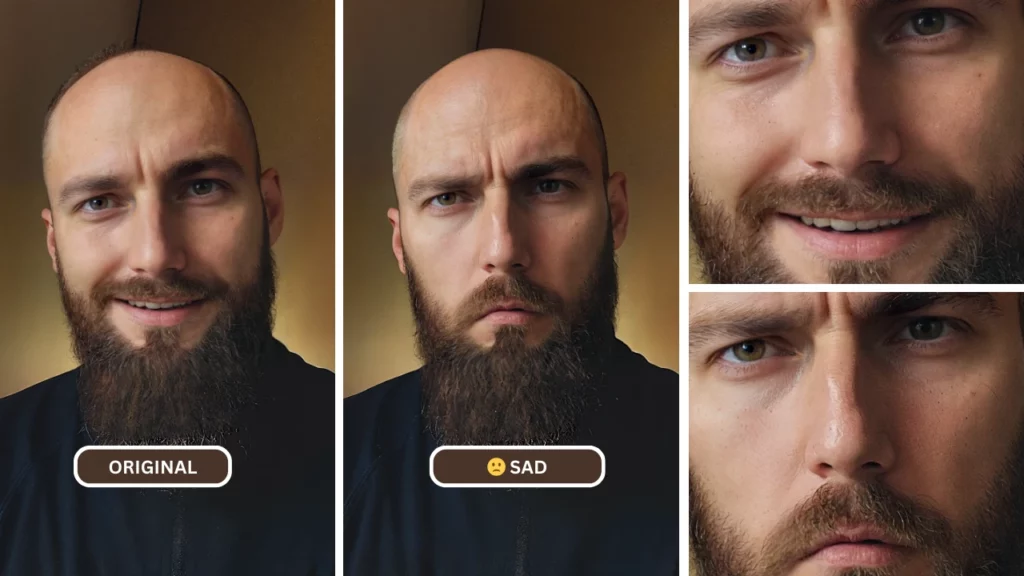
A sad face generator serves multiple purposes, making it a valuable tool for different users, whether for entertainment, creative expression, or professional needs.
- For Fun and Social Media: Whether you’re crafting memes, enhancing reaction images, or personalizing profile pictures, a sad face generator allows you to create expressive and relatable content. It can add humor or dramatization to posts, making them more engaging and shareable.
- For Creative Projects: If you’re into digital art, storytelling, or character emotion studies, a sad face generator can help bring your ideas to life. Writers and artists can use it to visualize different emotional states for characters, while animators and illustrators can reference generated expressions to enhance their work.
- For Professional Use: Graphic designers, content creators, and marketers often need mood-specific visuals to convey emotions effectively. A sad face generator provides an efficient way to create emotion-driven graphics, whether for branding, advertisements, or user engagement. It ensures consistency in design while saving time in manually editing or drawing expressions.
With its versatility, a sad face generator is a useful tool for anyone looking to explore or enhance expressions of sadness in their content.
Read more about our guide on how you can use SuperID as an AI Face Enhancer
4. Features of a Good Sad Face Generator
A well-designed sad face generator should incorporate several key features to ensure realistic, efficient, and user-friendly results.

a. Realistic Expression Mapping
– The core of a high-quality sad face generator lies in its ability to accurately map facial expressions. Advanced AI algorithms should analyze facial landmarks and adjust them naturally to reflect a genuine sad expression. This includes subtle changes such as downturned lips, furrowed brows, and teary eyes, mimicking real human emotions rather than generating artificial or exaggerated expressions.
b. Easy-to-Use Interface
– A good sad face generator should prioritize simplicity and accessibility. Users should be able to transform a neutral or happy face into a sad one with minimal effort, whether through a drag-and-drop feature, a quick upload option, or even real-time camera processing. A well-structured interface ensures that even those without technical expertise can easily navigate the tool.
c. Customization Options
– Personalization plays a crucial role in enhancing user experience. A versatile sad face generator should allow users to modify the intensity of the sadness, adjust facial features like eyebrow positioning or tear levels, and even apply different artistic effects. Whether for entertainment, digital art, or emotional storytelling, these customization options help users achieve the exact look they desire.
Read more about our guide on Crying Face Filter.
d. Fast Processing
– Speed is essential for any image manipulation tool. A good sad face generator should deliver instant or near-instant results, allowing users to generate sad expressions without lengthy wait times. Whether using AI-powered cloud processing or an offline application, efficiency ensures a seamless experience.
e. Free vs. Paid Options
– Many sad face generators offer both free and premium features. A basic free version should provide standard facial transformation capabilities, while a paid version might include advanced features like high-resolution exports, additional customization settings, or commercial-use licenses. Understanding the differences between free and paid options helps users choose the best tool for their needs.
A high-quality sad face generator should balance realism, ease of use, speed, and flexibility, ensuring that users can quickly and effectively generate emotionally expressive faces for various purposes.
5. How to Use an Online Sad Face Generator
Using an online sad face generator is a simple and effective way to transform any facial expression into a sorrowful or melancholic look. Whether for fun, creative projects, or editing needs, follow these steps to get the best results.
Step 1: Uploading an Image
To begin, navigate to your chosen sad face generator and locate the upload option. Most platforms allow you to upload an image from your device, whether it’s a selfie, a picture of a friend, or any other photo you want to edit. Some generators also support drag-and-drop functionality for added convenience. Ensure that the image is clear and well-lit for optimal transformation.
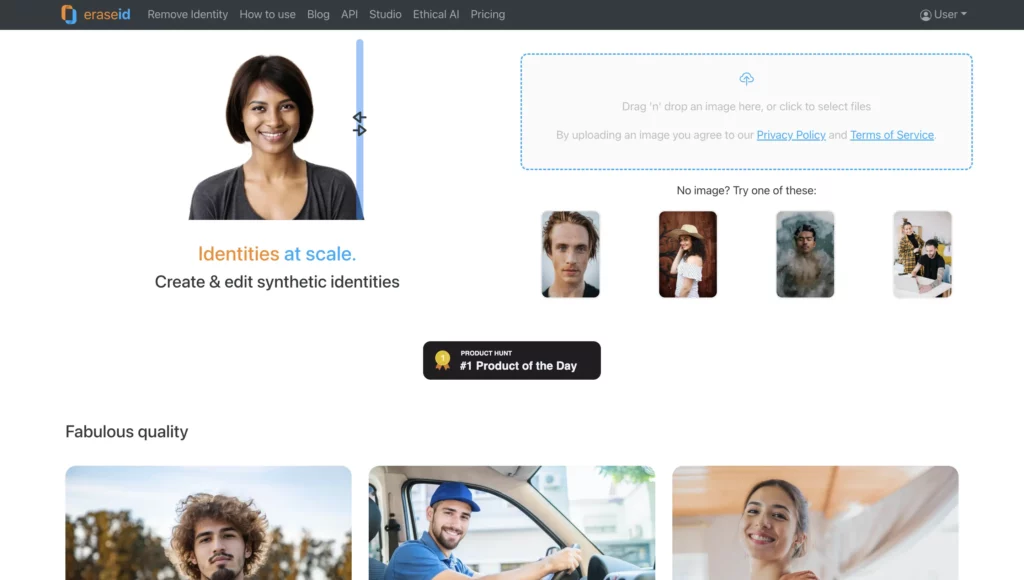
Step 2: Adjusting Sadness Intensity and Previewing the Transformation
Once the image is uploaded, EraseID will provide prompts to modify the expressions. Users can typically adjust parameters such as the curve of the smile, the angle of the eyes, and the depth of teary or glistening eyes. As adjustments are made, the preview feature will display changes, allowing users to fine-tune the expression to their preference.
Step 3: Downloading and Sharing the Edited Photo
After achieving the desired level of sadness, the final step is to save and share the transformed image. Most sad face generator tools offer high-resolution downloads in various formats like PNG or JPEG. Additionally, users can directly share their edited photos on social media platforms or send them via messaging apps. Some generators even provide unique links for easy online sharing.
By following these steps, anyone can effortlessly use a sad face generator to create expressive, emotional transformations in just a few clicks.


6. Best Sad Face Generators Available Online
When looking for a sad face generator, you’ll find several free and paid tools that can help create realistic or stylized sad expressions. These tools utilize AI and image editing capabilities to transform neutral or happy faces into sad ones, making them useful for content creators, meme makers, and digital artists. Below are some of the top sad face generator options available online:
i. EraseID (Freemium)
EraseID is a powerful AI-driven tool that specializes in emotion editing, allowing users to modify facial expressions in photos with precision. It can turn a smiling face into a frown while maintaining natural facial features. Key features include:
- AI-powered emotion transformation
- High-resolution output
- Ability to adjust subtle facial details for a realistic sad expression
- Paid plans with a free trial option
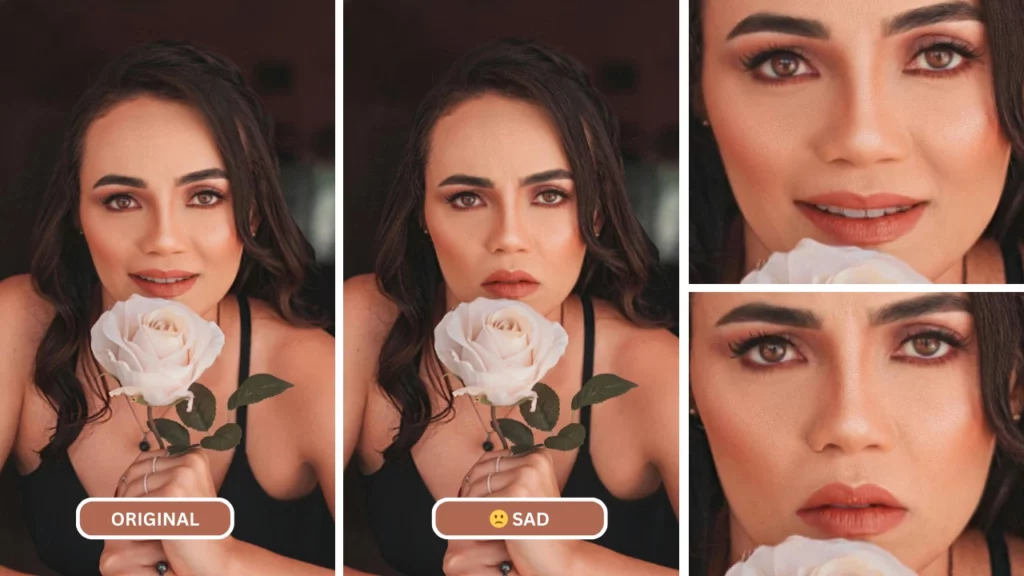
ii. FaceApp
FaceApp is a widely popular photo editing app that includes an emotion filter, making it an effective sad face generator. Users can upload an image and apply a sad expression with a single tap. Features include:
- One-click emotion filters
- Realistic AI-generated sad faces
- Free basic features with in-app purchases for advanced edits
iii. DeepFaceLab
Although primarily a deepfake tool, DeepFaceLab can be used as a sad face generator by manipulating facial expressions in videos and images. It’s a powerful option for professionals but has a steeper learning curve. Features include:
- Advanced AI-based facial editing
- Supports video and image transformations
- Free to use, but requires technical expertise
iv. Fotor
Fotor is an online photo editor with an AI face editing tool that can serve as a sad face generator by allowing users to tweak facial expressions manually. Key features include:
- Easy-to-use interface
- AI-powered facial editing tools
- Free with premium options for advanced features
v. LunaPic
LunaPic is a simple yet effective online editor that allows users to manually adjust facial expressions by altering facial features such as eyebrows and mouth position. While not an AI-powered sad face generator, it offers manual control for precise edits. Features include:
- Free and web-based
- Manual facial editing tools
- No software installation required
Comparing Key Features & Pricing
| Sad Face Generator | Free/Paid | AI-Powered | Ease of Use | Best For |
| EraseID | Freemium ( 10 Trial Credits) | Yes | Easy | Professional emotion editing |
| FaceApp | Freemium | Yes | Easy | Quick emotion filters |
| DeepFaceLab | Free | Yes | Hard | Advanced users and deepfake creators |
| Fotor | Freemium | Yes | Easy | Online photo editing |
| LunaPic | Free | No | Medium | Manual facial adjustments |
Each sad face generator has its own strengths, depending on whether you need fast AI-powered results or more detailed manual editing. Whether you’re a casual user or a professional looking for advanced facial modifications, these tools can help create convincing sad expressions in images.
7. AI in Emotion Editing: How Does It Work?
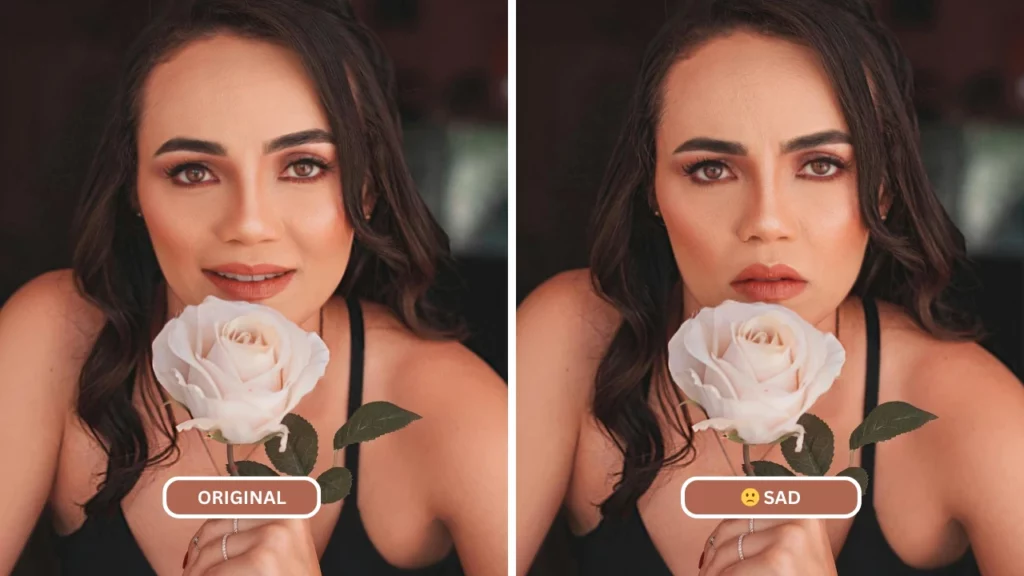
AI-powered face editing leverages deep learning techniques and neural networks to manipulate and alter facial expressions, allowing for the generation of customized emotions in digital images and videos. One of the most common applications of this technology is in creating a sad face generator. This generator uses complex algorithms to identify key facial features such as the mouth, eyes, and eyebrows, and adjust them in ways that evoke specific emotional responses, like sadness.
At the core of this technology are deep neural networks, which are trained on vast datasets of facial images representing various emotional states. By learning from this data, AI models are able to understand the subtle variations in facial movements that correspond to different emotions. The sad face generator, for example, can analyze an image of a person and adjust their facial expression to make them appear sad by slightly curving the mouth downward, drooping the eyelids, and creating furrows in the brow.
In addition to generating new emotional expressions, these AI systems also have the capability to modify existing ones. This allows for real-time editing of facial expressions in videos, virtual avatars, and even photos, making the sad face generator a valuable tool in entertainment, marketing, and content creation.
However, the rise of AI-based facial manipulation raises significant ethical concerns. The ability to artificially alter facial expressions and emotions can lead to the creation of misleading or deceptive content. For instance, manipulating someone’s facial expression to make them appear sad, angry, or happy without their consent can misrepresent their true emotions and intentions. This has potential implications for privacy, consent, and the overall authenticity of media.
8. Fun Ways to Use a Sad Face Generator
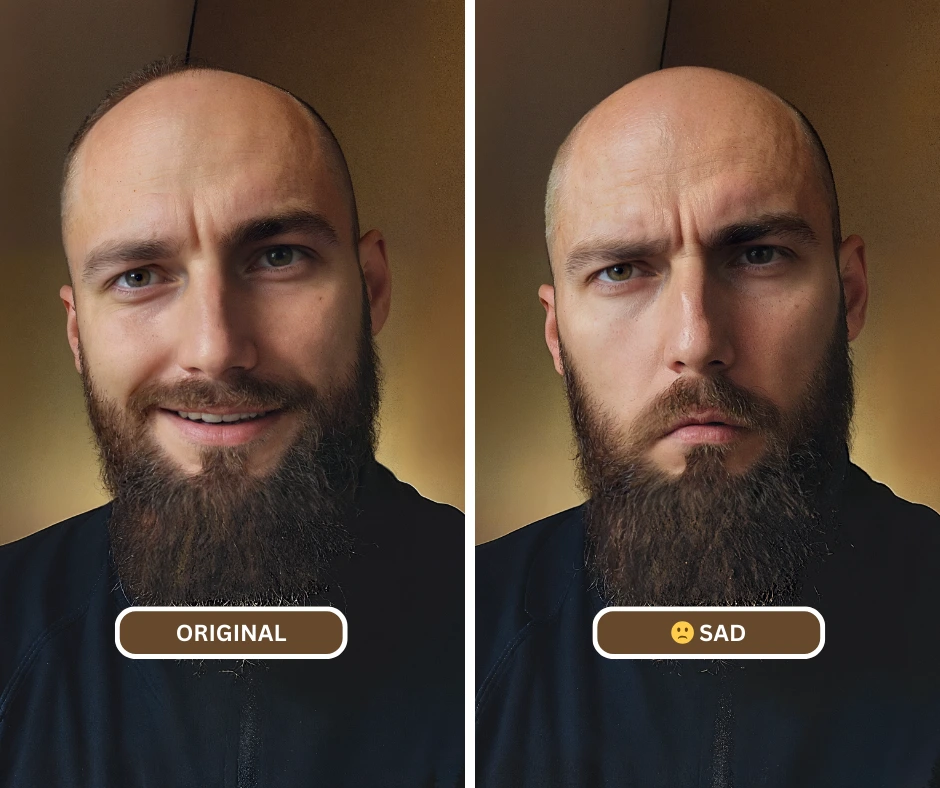
A sad face generator can be a creative tool for a variety of fun applications. One of the most popular ways to use it is by creating sad memes and funny reaction photos. By adding a sad expression to a character or person, you can turn a normal image into something comical or relatable, perfect for social media sharing or as part of humorous content creation.
Another interesting use is transforming happy faces into sad ones for storytelling purposes. Whether for a comic strip, short video, or digital art, altering a character’s expression can convey a different mood or emotion. This technique can be used to highlight dramatic moments or add contrast to a scene, enhancing the overall narrative.
Additionally, experimenting with different emotions in character design becomes easier with a sad face generator. Designers can quickly alter a character’s expression to explore how subtle changes in facial expression impact the perception of their personality or role in a story. Whether for animation, graphic novels, or video games, the ability to generate various emotional expressions, including sadness, adds depth and nuance to characters.
Take a look at our blog about EraseID Tutorial.
9. Conclusion
In conclusion, using EraseID offers a range of benefits for those looking to create authentic, emotional expressions quickly and easily. Whether you’re a digital artist, game developer, or just someone wanting to experiment with facial expressions, a sad face generator provides a convenient tool to produce realistic and convincing portrayals of sadness. These tools can be used for various purposes, from enhancing character designs to creating more engaging content for multimedia projects.
EraseID’s sad face generator is one of the most advanced tools available, offering highly detailed and lifelike transformations that will help elevate your work. The ease of use combined with the ability to achieve professional-quality results makes it an invaluable resource for anyone in need of accurate emotional expressions.
Don’t miss out on the opportunity to experience this incredible tool for yourself. Try out the sad face generator today and see the difference it can make. After testing it, we encourage you to share your experience with others—your feedback can help improve this already outstanding tool even further.
10. Frequently Asked Questions (FAQs)
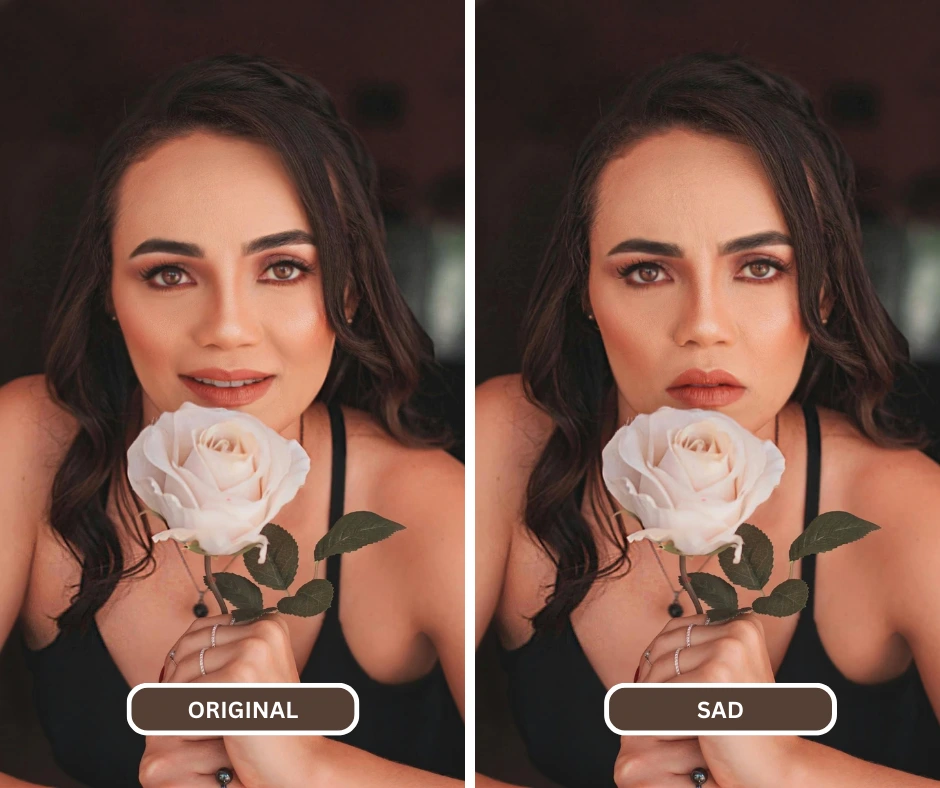
i. Is a Sad Face Generator free to use?
Many sad face generators offer free access with limited features or a basic version that allows users to experiment with generating sad expressions. However, some platforms may charge for premium features, additional customization options, or high-resolution image downloads. It’s essential to check the terms and conditions of the specific sad face generator to understand what is free and what requires payment.
ii. Can I use it on group photos?
Yes, you can use a sad face generator on group photos, but the results may vary depending on the software or app. Most sad face generators work best on individual portraits where facial expressions are clear. For group photos, the software may have difficulty accurately detecting and modifying each person’s face to produce a consistent sad expression across all individuals. It may require manual adjustments or additional processing to get the desired effect.
iii. Is AI-generated facial editing ethical?
The ethics of AI-generated facial editing, such as using a sad face generator, depend on how the technology is used. If it is used for harmless entertainment or artistic purposes, it is generally considered ethical. However, ethical concerns arise when the technology is misused to manipulate images or create misleading representations without the consent of the individuals involved. It’s important to ensure transparency and respect privacy when using AI-generated facial editing tools.
iv. Are there mobile apps for this feature?
Yes, there are several mobile apps available that incorporate sad face generators or similar features. These apps allow users to add various facial expressions, including sad faces, to photos easily on their smartphones. Some apps may even use AI technology to detect and alter facial expressions in real-time, providing a fun and interactive way to generate sad faces on the go. Always check app reviews and ratings to find reliable and user-friendly options.

